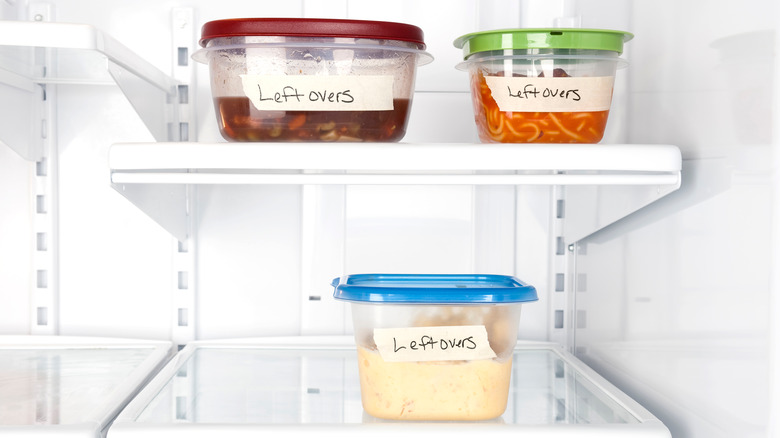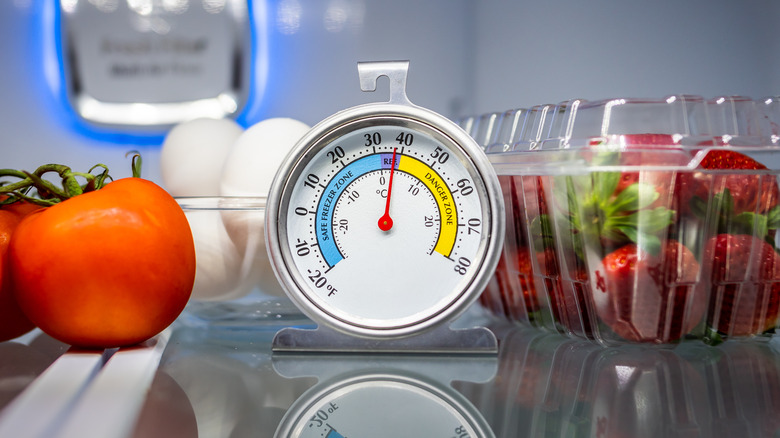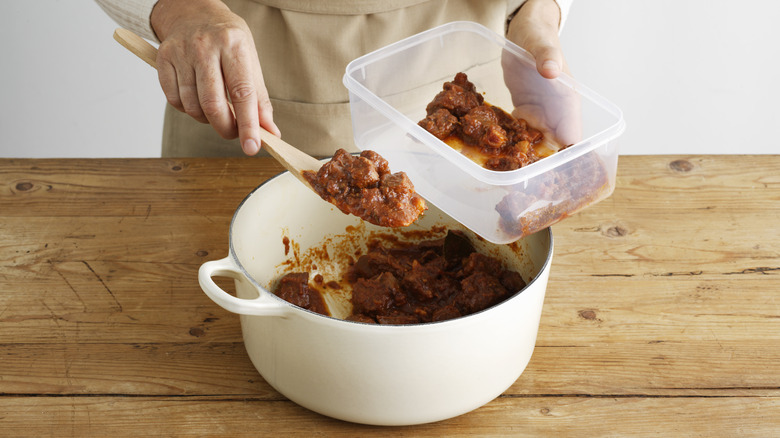Do Leftovers Need To Cool Down Before Going In The Fridge?
I once took a food safety course for restaurant professionals in some bland office in Downtown Chicago. At one point, the instructor posed a question she seemed to think would stump us. Restaurant chefs, she said, have to go to all sorts of lengths to cool food for storage — rapidly chilling soups and sauces in an ice bath, for instance — before it can be safely transferred to the walk-in cooler. But home cooks can usually get away with just throwing leftovers straight into the fridge. Why the discrepancy?
I hazarded a guess: It has to do with the quantity, I ventured. Restaurants work with such great volumes that it simply takes food too long to cool down in a refrigerator — long enough that it may permit the growth of harmful bacteria. Home cooks, meanwhile, deal in small enough amounts that, usually, leftovers can safely be transferred straight to the fridge, even if they're still warm.
"Bingo!" she said. You'll hear that same answer from the USDA: Small amounts of hot leftovers can be put directly into the fridge. In fact, it's better to do that than let them linger at room temperature. You can achieve the same effect with large amounts by dividing them into smaller containers. And if you're dealing with truly huge quantities and need to chill them rapidly, there are ways to do that, too — like the pros, you can use an ice bath for quick cooling. Here are the ins and outs.
The basic facts of safe food storage
Whether you're in a professional setting or at home, the laws of food safety are unbending: Dangerous bacteria (salmonella, E. coli, et al.) grow best within what's known as the "danger zone," a temperature range between 40 degrees and 140 degrees Fahrenheit. Room temperature is well within that danger zone, so experts advise that you leave cooked and perishable food in this range for no more than two hours. Any longer, and it needs to be chilled at 40 degrees Fahrenheit or below (i.e., in the refrigerator or freezer) or kept warmer than 140 degrees Fahrenheit (i.e., in a slow cooker or on a steam table). If you're someplace warmer than room temp — like at a summer picnic, where temps may be 90 degrees and above — you're looking at one hour max before you need to put that food away (along those lines, here are some more food storage mistakes to avoid).
Some people worry that putting hot foods straight into the fridge will raise the fridge's temperature. But if you're dealing with home-kitchen quantities, this shouldn't be a problem — the main thing is to get your food on that path to sub-40 temps before you forget about it. Say you've had a dinner party that will likely drag on into the evening — you'll open another bottle of wine (or box of wine, if that's your thing), maybe move to the living room. In this scenario, take care of those leftovers before you get sidetracked. The dishes can still wait.
How to cool leftover food quickly
All that said, if you're cooking large quantities of food for storage and want to make sure they're safe, there are ways to speed the cooling process along. One of these is to do precisely what the pros do: Stick the food in an ice bath. With something like soup or stew, transfer it to a temperature-safe bowl. Then, fill another, larger bowl with ice cubes and a bit of water. Nestle that smaller, soup-filled bowl on top of the ice bath and let it cool, stirring occasionally to speed up the process.
If you don't want to go through the trouble of setting up an ice bath, there are other shortcuts for cooling leftovers. Transferring food from a deep pot to a wider, shallower container, like a rimmed pan — if you're dealing with soup, say, or a big batch of rice — will increase the surface area and allow for quicker cooling in the fridge. Once that's accomplished, you can transfer the food to storage containers (here are some of our favorites). Alternatively, you can divide it right away among smaller, shallow containers, where the chill of the fridge can penetrate to the center of the food more quickly than if it was still in one big pot. If you're looking at something like a large cut of meat — a roast, for instance — the same principle applies: Carve it into smaller pieces for quicker cooling. You'll be doing yourself another kind of favor here, too — it'll be easier to make into sandwiches the next day.


